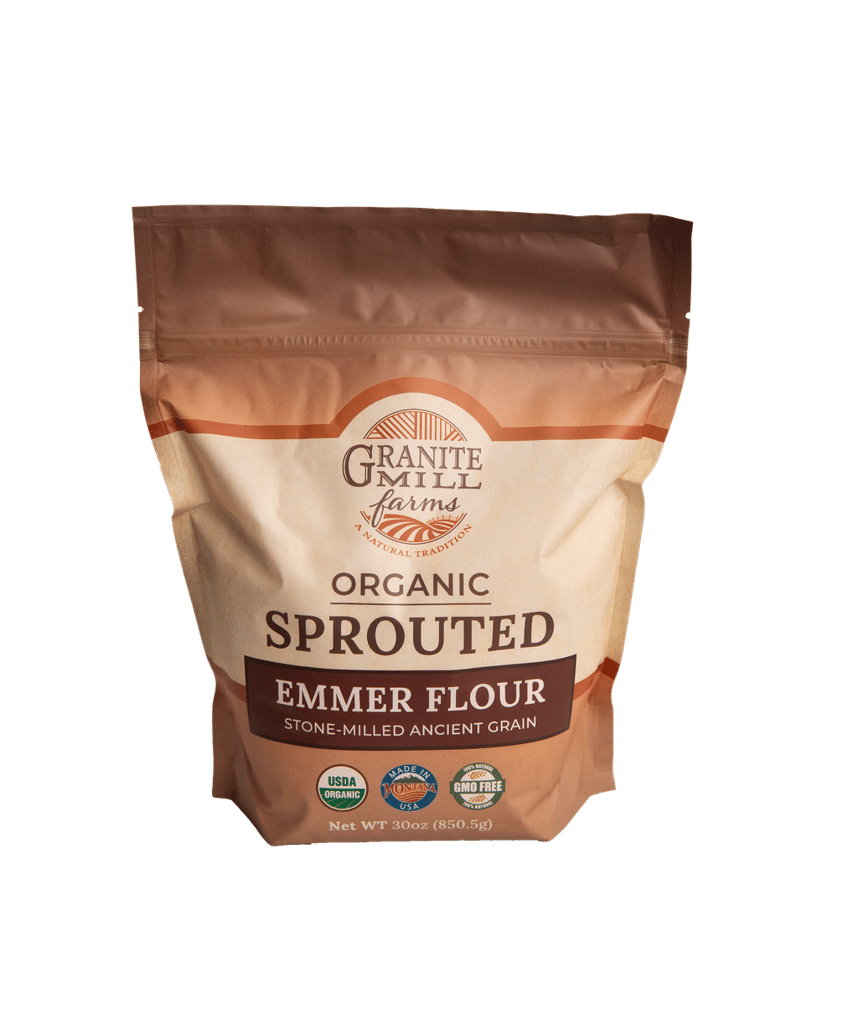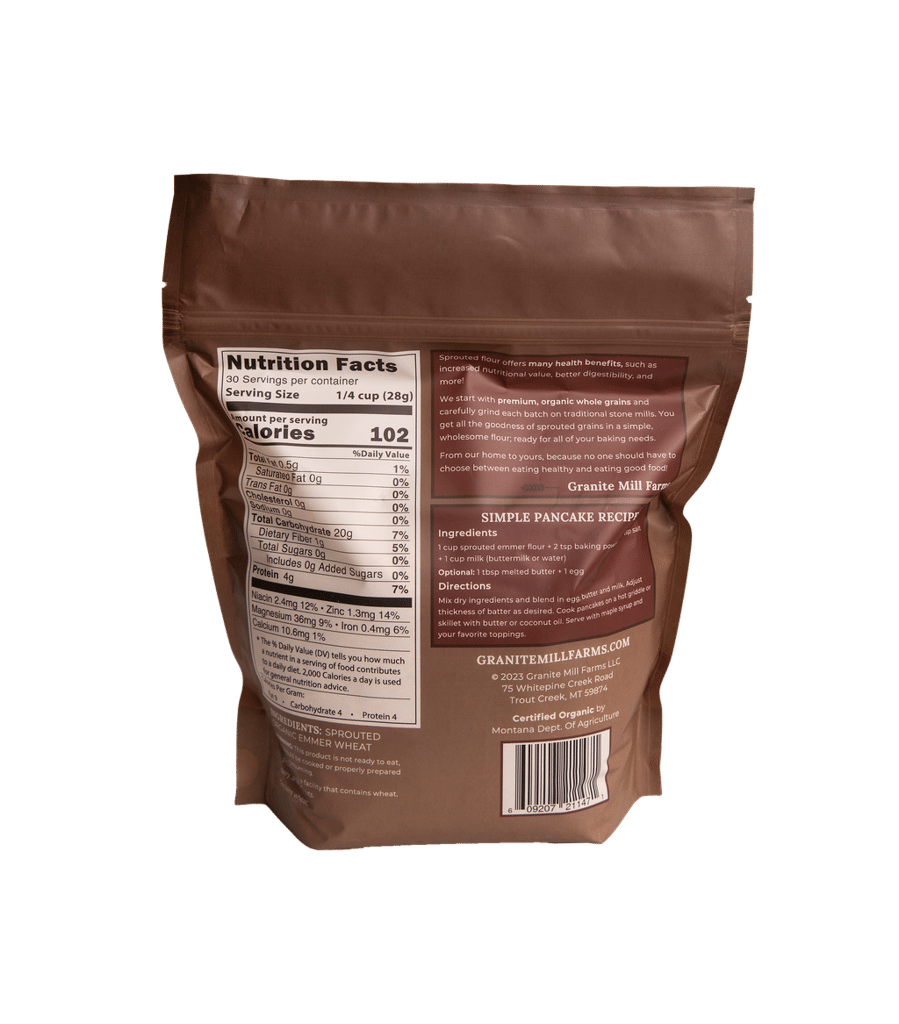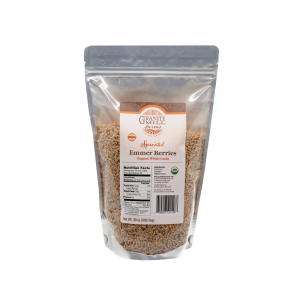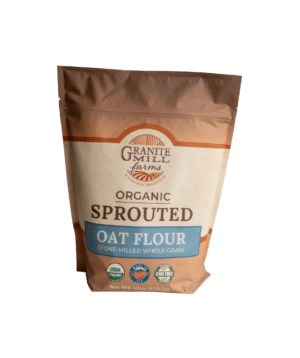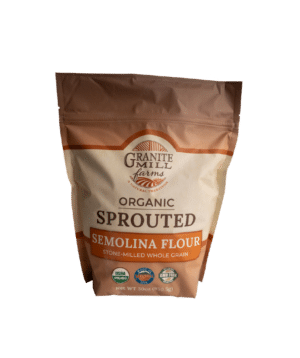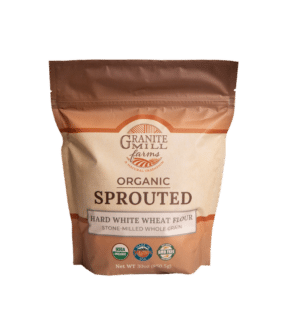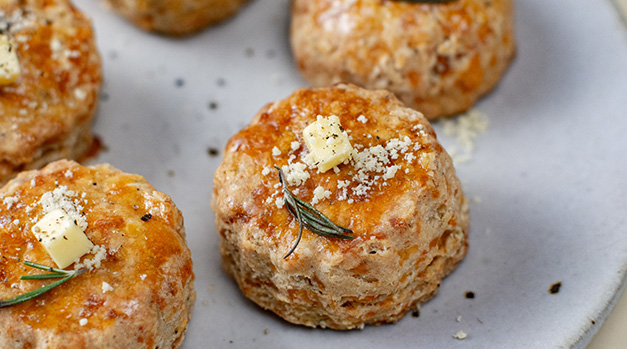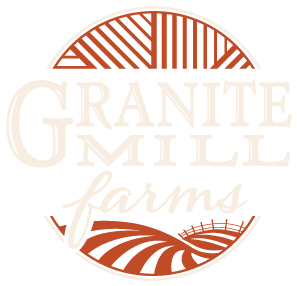$6.75 – $76.75
An ancestor of durum wheat, emmer is ideal for muffins, pasta, or flatbreads like pizza crust & naan.
All of our flour is 100% whole grain, USDA organic, and GMO free. It is ground in small batches on a traditional stone mill. Choose between Sprouted or Natural (unsprouted).
“I found this emmer flour to be incredibly tasty, has a nice color, and smells wonderful.”
“… has a wonderful nutty flavor, not too heavy: highly recommended.”
Flour Profile
Species: Triticum dicoccum
Flavor: Sharp, bold, earthy
Fun fact: Emmer was a prevalent food crop in Pharaonic Egypt. It is even speculated that the Romans referred to it as “Pharaoh’s wheat”, and that this could be the linguistic origin of the word “farro”.
Nutrition: Emmer flour is a nutrient-dense ancient grain, packed with protein, fiber, and essential minerals like magnesium, iron, and zinc. Its high antioxidant content supports immune health, while its complex carbohydrates provide steady energy. With a lower gluten content than modern wheat, it is easier to digest and ideal for whole grain baking.
Description:
One of the very earliest cultivated wheats, emmer is truly an ancient grain. Today it is often associated with Old Egypt, and while it was indeed a staple crop in that culture, it had already been in cultivation for quite a bit of history before that time as well. Comparatively low-yielding, it was eventually surpassed by modern agriculture, and remains unchanged to this day. For the past 100 years or so it has enjoyed a renaissance of sorts. Mountainous countries like Italy have maintained and even expanded their emmer crops as it becomes more recognized and sought after. Several growers in the American Northwest have been producing clean, organic emmer for some time now, making it more readily available to the U.S. market.
Emmer is also known by its Italian name, farro. This can be confusing as farro is defined as an “ancient hulled wheat” and also includes einkorn (farro piccolo) and spelt (farro grande). To the Italians, however, emmer is the original farro, farro medio. In the U.S., farro usually refers specifically to emmer and they can be used interchangeably.
Emmer has a variety of culinary applications. It is low in gluten, making it a good choice for flatbreads like pita or naan; or you can blend it with other flours to add flavor and complexity to sourdough. It has a rich, distinctive taste and smell; we like to use it in simple pancakes where the flavor can really shine. When used as a whole grain, it makes a delicious, nutty alternative to rice in dishes like farrotto.


